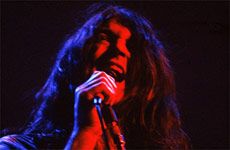Conclusion
The advancement of amplification technology was a necessary step in adapting to the changing locale of rock music from outdoor festivals to massive indoor stadiums. Increased amplification and distortion allowed the music to reach every corner of the arena and drown out even the loudest of crowds. While the development of amplification technology grew out of necessity and was highly intertwined with logistic and financial motivations, it also changed the way we define rock music. Bands that came after The Rolling Stones continued to push the envelope of amplification throughout the 1970s in an attempt to gain the signature “loudness” that was now associated with rock music. In a sense, it became some kind of ego war between acclaimed rock groups to be crowned the loudest band. No longer was amplification used for the practical purpose of making sure the audience and band members could hear the music, but bands wanted the audience to quite literally feel the music and vibrations of sound in their cores. In 1972, the band Deep Purple was recognized by the Guiness Book of World Records for their ear splitting performance at London’s Rainbow Theatre. The performance clocked in at 117 decibels using a 10,000 watt Marshall PA system and was allegedly loud enough to knock three people unconscious who were standing near the speakers (Chilton, 2020).


Later in this decade, The Who would also utilize the power of amplification to captivate audiences. In 1976 the band claims to have clocked in a performance at 126 decibels. The emphasis on being loud did not come without a cost for the band members of The Who, as two members, Peter Townshend and Roger Daltrey, would develop severe hearing impairments after years of being one of the loudest bands in the world (Chilton, 2020). This use of loudness to captivate audiences has become emblematic of rock music to this day and all began with the shift in venue from outdoor fields to arenas as well as with the advancements of amplification systems like the Marshall Amp.